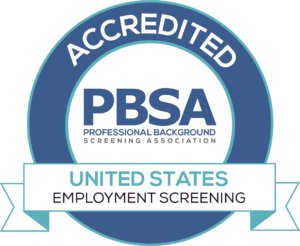What are the different types of employment fraud?
The risk of employee fraud is much higher for small businesses than it is in corporations. Hiring professionals in small businesses need to keep an eye open for multiple types of employment frauds.
What is employment fraud?
Employee fraud is one of the most costly liabilities facing organizations, and many businesses are waiting until they are harmed before introducing the robust theft measures required to prevent it. The fact that there are so many forms of fraud and theft that involve various methods of discovery is one of the greatest challenges in identifying, investigating, and preventing employee fraud. The fact that there are so many forms of fraud and theft that involve various methods of discovery is one of the greatest challenges in identifying, investigating, and preventing employee fraud.
Who is at risk for employee fraud?
The risk of employee theft is far greater than it is for larger companies if you have less than 100 employees. The Association of Certified Fraud Examiners (ACFE) released its Report on Occupational Fraud and Harassment to the Nations in 2018, the largest and most detailed occupational fraud analysis to date. According to the report’s Small Business section, “small businesses lose approximately twice as much per scheme to workplace theft [compared to larger corporations],” and the “median loss for under-100 employee businesses is $200,000.”
Types of employment fraud
Fraud by workers comes in several ways. You cannot even see it coming without searching for red flags. Here are some common forms of worker fraud:
- Theft – This happens any time an employee steals money, property, or resources from your business.
- Embezzlement – This occurs when the accountants in charge of your money are stealing it.
- Kickbacks/bribery – This is when employees accept money in exchange for preferred treatment.
- Benefits fraud – This occurs when employees defraud company benefits, using sick days while healthy.
- Payroll fraud – Employees also may steal time by illegally adjusting timesheets to show that they’re present when they’re absent.
What is the potential risk of employee fraud for a business?
There is a huge chance of employee theft. Employees have company keys. They will cause havoc by removing essential data, destroying customer relationships, and eventually putting the company out of business using their logins. By using access management and tracking procedures, you can reduce the risk of employee theft. Every process, especially those involving money, should have checks and balances in place to identify and prevent fraud. By proactively identifying fraud, you’ll be in a better position as a company.
Identifying employee frauds
Here are five red flags to look out for:
- The lifestyle of an employee unexpectedly doesn’t fit his wages – When an employee is suddenly living well beyond their means, that could be a sign of fraud.
- An employee is being secretive – If one of your employees is extremely reluctant to share their processes or to have someone review their work, that could be a sign of fraud.
- You’ve got regular tips about a certain employee or complaints – This might seem obvious, but according to the ACFE, 29% of fraud in businesses with fewer than 100 employees is detected as a result of tips.
- There were many contradictions in the receivables accounts – Excessive or unexplained cash transactions; unreconciled bank account statements; an unusual increase in expenses, supplies, or employee reimbursements; or sudden activity in previously inactive accounts can point to fraud.
- An employee feels they don’t have the rules – If you have the necessary internal controls in place but an employee refuses to follow proper procedures or adhere to regulations, this can be a red flag for fraud.
For any company, fraud can trigger long-lasting, damaging consequences, but the repercussions can be much more extreme for small businesses. Since small businesses usually have fewer resources to stop and recover from fraud, it is critical not only for small business owners to be on the lookout for red flags, but also to act on them. More specifically, small companies need resources to establish and implement proper internal controls to prevent fraud from occurring in the first place.
For more fraud lists, read - How to Spot the Red Flags for Employee Fraud
Prevention from multiple types of employment fraud
- Supervise employees closely.
- Use purchase orders
- Control cash receipts
- Use informal audits
- Install computer security measures
- Track your business checks
- Manage inventory and use security systems
- Beware of accounts receivable
- Provide a way for employees to report theft or fraud by co-workers
[button open_new_tab=”true” color=”accent-color” hover_text_color_override=”#fff” size=”medium” url=”http://127.0.0.1:81/wordpress/quick-quote/” text=”Get a Quick Estimate on Background Screening” color_override=””]










